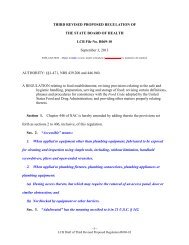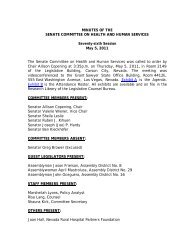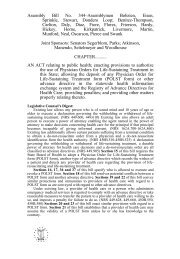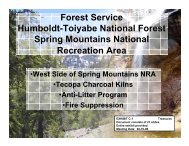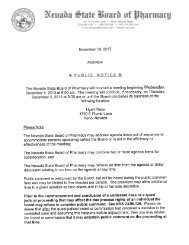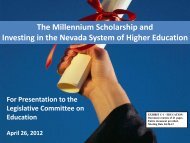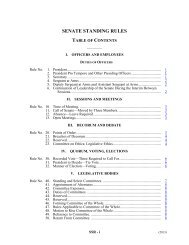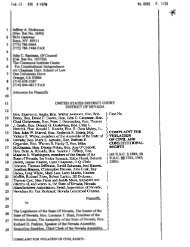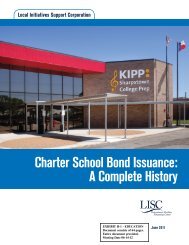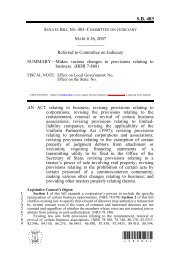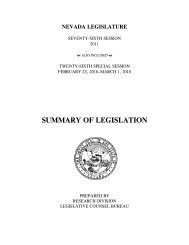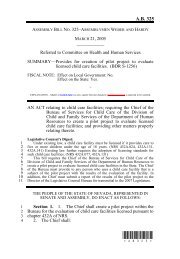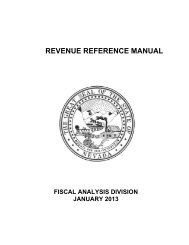Nevada Pre-Kindergarten Standards
Nevada Pre-Kindergarten Standards
Nevada Pre-Kindergarten Standards
Create successful ePaper yourself
Turn your PDF publications into a flip-book with our unique Google optimized e-Paper software.
N8B Students understand the interactions of science and society in an ever-changing world.<br />
N12B Students understand the impacts of science and technology in terms of costs and benefits to society.<br />
PHYSICAL SCIENCE<br />
Matter<br />
P2A Students understand that matter has observable properties.<br />
P5A Students understand properties of objects and materials.<br />
P8A Students understand the properties and changes of properties in matter.<br />
P12A Students understand that atomic structure explains the properties and behavior of matter.<br />
Forces and Motion<br />
P2B Students understand that position and motion of objects can be described.<br />
P5A Students understand that forces can change the position and motion of an object.<br />
P8A Students understand that position and motion of an object result from the net effect of the different forces acting on it.<br />
P12A Students understand the interactions between force and motion.<br />
Energy<br />
P2C Students know heat, light, and sound can be produced.<br />
P5C Students understand that energy exists in different forms.<br />
P8C Students understand transfer of energy.<br />
P12C Students understand that there are some interactions between matter and energy.<br />
EARTH AND SPACE SCIENCE<br />
Atmospheric Processes and the Water Cycle<br />
E2A Students understand that changes in weather often involve water changing from one state to another.<br />
E5A Students understand the water cycle’s relationship to weather.<br />
E8A Students understand the relationship between the Earth’s atmosphere, topography, weather and climate.<br />
E12A Students understand heat and energy transfer in and out of the atmosphere and influence weather, and climate.<br />
Solar System and Universe<br />
E2B Students understand there are objects in the sky which display patterns.<br />
E5B Students understand that there are many components in the Solar System including Earth.<br />
E8B Students understand characteristics of our solar system that are part of the Milky Way galaxy.<br />
E12B Students know scientific theories of origins and evolution of the universe.<br />
Earth’s Composition and Structure<br />
E2C Students understand that Earth materials include rocks, soils, and water.<br />
E5C Students understand that features on the Earth’s surface are constantly changed by a combination of slow and rapid processes.<br />
E8C Students understand that landforms result from a combination of constructive and destructive processes.<br />
E12C Students understand evidence for processes that take place on a geologic time scale.<br />
LIFE SCIENCE<br />
Heredity<br />
L2A Students understand that offspring resemble their parents.<br />
L5A Students understand that some characteristics are inherited and some are not.<br />
L8A Students understand the role of genetic information in the continuation of a species.<br />
L12A Students understand how genetic information is passed from one generation to another.<br />
Structure of Life<br />
L2B Students understand that living things have identifiable characteristics.<br />
L5B Students understand that living things have specialized structures that perform a variety of life functions.<br />
L8B Students understand that living things are composed of cells, which are specialized in multi-cellular organisms to perform a variety of life functions.<br />
L12B Students understand that all life forms, at all levels of organization, use specialized structure and similar processes to meet life’s needs.<br />
78



